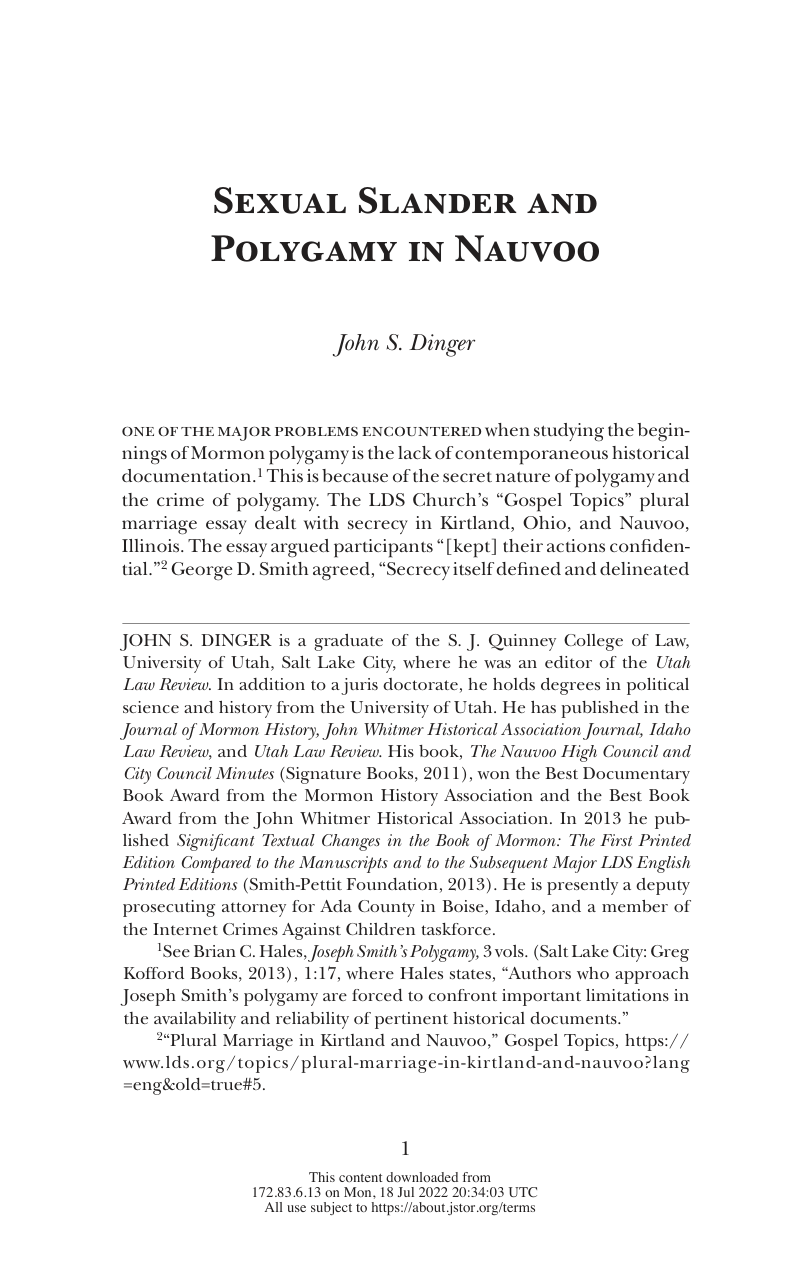John S. Dinger reviews legal cases involving sexuality with Joseph; including May 1844 adultery indictment.
- Type
- Academic / Technical Report
- Source
- John S. Dinger LDS
- Hearsay
- DirectSecondary
- Reference
John S. Dinger, "Sexual Slander and Polygamy in Nauvoo," Journal of Mormon History 44, no. 3 (July 2018): 1–22
- Scribe/Publisher
- Journal of Mormon History
- People
- John S. Dinger
- Audience
- Reading Public
- Transcription
One of the major problems encountered when studying the beginnings of Mormon polygamy is the lack of contemporaneous historical documentation.1 This is because of the secret nature of polygamy and the crime of polygamy. The LDS Church’s “Gospel Topics” plural marriage essay dealt with secrecy in Kirtland, Ohio, and Nauvoo, Illinois. The essay argued participants “[kept] their actions confidential.”2 George D. Smith agreed, “Secrecy itself defined and delineated this tragedy.” However, he added, “Mormon record-keepers faced a dilemma in writing about Nauvoo” because they were “engaged in ‘illegal’ bigamous marriages.”3
Another reason for the lack of contemporaneous documents is the existence of sexual slander laws and their criminal and civil use in nineteenth-century Illinois. While legislatures created these laws to protect women’s reputations, Joseph and Hyrum Smith used them to counter claims against their participation in polygamy or “spiritual wifery.”
Such lawsuits help to explain the lack of detail in John C. Bennett’s History of the Saints, and William and Wilson Law’s Nauvoo Expositor. While these laws may have helped to protect polygamists, they challenge historians studying Nauvoo polygamy. A legal lens provides context to the limited polygamy sources in the 1840s.
- Citations in Mormonr Qnas
The B. H. Roberts Foundation is not owned by, operated by, or affiliated with the Church of Jesus Christ of Latter-day Saints.

